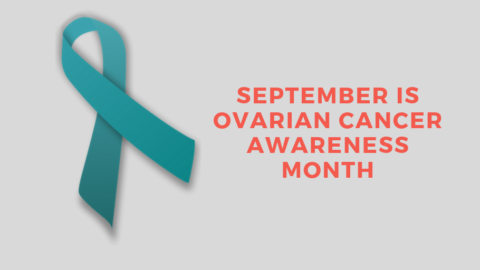One of the biggest challenges to public health is crafting our message effectively. We have to balance leading with the evidence around continued health disparities and racial injustice in our systems and structures with the nuanced, contextualized language that makes equity relatable and achievable.
In my work with adverse childhood experiences (ACEs), I am quick to point out that the overarching idea of childhood experiences affecting adult outcomes isn’t new.
This isn’t to discredit all the incredible progress research has made to understand the ways in which childhood adversity affects early childhood development, and later health outcomes, but points to the unique contribution of the language and framing of ACEs. It’s a movement that everyone can get behind, as overwhelming evidence shows that ACEs are common and prevalent across populations, but also helps contextualize and build support around the idea of racial equity: namely, by recognizing the role that historical trauma can play on the exposure to ACEs.
The COVID-19 pandemic is providing us with another opportunity to frame social justice and well-being in a time when we are very divided politically and racially. As a researcher and woman of color in South Carolina, I am cautiously optimistic the coronavirus outbreak is providing us with a case study that can demonstrate why health equity is not only so important, but the underlying challenge to improving our nation’s health.
Overwhelming evidence establishes that structural racism is the root cause of inequities in health. The American South continues to reap the consequences of structural racism demonstrated by its racial disparities of chronic diseases and early mortality (and preliminary data suggest that COVID-19 may be no different from these disparities).
Some scholars may argue that the consequences are larger for this considering the history of the Civil War and Jim Crow. But, the type of racism that is more commonly in our narratives, are not structural, but interpersonal, like Charleston AME Church massacre or the brutal murder of Ahmaud Arbery. COVID-19 provides us an opportunity to see it in real time through the disproportionate rates of early mortality caused by the virus among people of color.
As a result, public is making connections to how socio-environmental and historical factors are inextricably linked to racial health disparities. New faces are championing equity. Decision-makers are questioning the status quo. Public health must harness this momentum and have hard conversations about racism to build support toward systemic and structural solutions.
The politics of public health are a constant reality. South Carolina was the last state to implement a “stay at home” order on the East Coast, one of nine red states nationally to hold out. Even considering the flexible stipulations of this order compared to other states, the benefits of this policy change were almost immediate: Expert projections of death associated with the virus were cut in half due to proper social distancing. This demonstrates that even the most politically conservative states hold the value of collective responsibility.
With proper policy action, this ideology can be invoked to benefit us all while more fairly distributing the burdens of those most vulnerable. It shows us that the concept of social determinants of health can be understood and achieved by the general public with effective framing and political buy-in. In order to move the needle on health equity, we must start with radical, evidence-based policy reform, which requires bold advocacy and communication efforts.
Finally, COVID-19 showcases the importance of building thriving communities and systems. It demonstrates that everyone should have positive and buffering supports available to them, including access to affordable health care, ability to cover basic needs, flexibility to work from home, and strong social ties.
In the research around ACEs, these are commonly referred to as protective factors. In South Carolina and across the country, positive mental health is being promoted, community efforts are being made to ensure basic needs are met, organizations are prioritizing well-being, and corporations are stepping up to provide financial support for much needed health care supplies.
On the other side of this pandemic, we should be adamant that these efforts continue, recognizing that resilience should not only be defined by being able to overcome a traumatic experience but to be able to thrive despite experiencing adversity.
This global pandemic has undoubtedly shed light on our fragmented health care system. It has shown us that racism is very much alive and well. It has shown the consequences of severely underfunding public health for decades. But despite all these daunting things, COVID-19 has given public health an opportunity to take the reins and ensure that every child, every family, and every community can live a just and healthy life.
Public health, this is our call to action.
- COVID19 in Puerto Rico and more evidence of colonialism as a social determinant of health
- Taking action in our communities: perspective from Peru
- Teaching the health education specialists of the future through a computer
- Schools are the path forward for ending COVID19 inequities in our communities
References
Asmundson, G. J. G., & Afifi, T. O. (2019). Adverse Childhood Experiences: Using Evidence to Advance Research, Practice, Policy, and Prevention. Academic Press. Cambridge, MA
Bruner, C. (2017). ACE, Place, Race, and Poverty: Building Hope for Children. Academic Pediatrics, 17(7, Supplement), S123–S129.
Ellis, W. R., & Dietz, W. H. (2017). A New Framework for Addressing Adverse Childhood and Community Experiences: The Building Community Resilience Model. Academic Pediatrics, 17(7S), S86–S93. https://doi.org/10.1016/j.acap.2016.12.011
Savitt, T. L., & Young, J. H. (1991). Disease and Distinctiveness in the American South. Univ. of Tennessee Press.
Srivastav, A., Strompolis, M., Kipp, C., Richard, C. L., & Thrasher, J. F. (2020). Moderating the effects of adverse childhood experiences to address inequities in tobacco-related risk behaviors. Health Promotion Practice, 21(1_suppl), 139S-147S.
Savitt, T. L., & Young, J. H. (1991). Disease and Distinctiveness in the American South. Univ. of Tennessee Press.
Thomas, K. K. (2011). Deluxe Jim Crow: Civil Rights and American Health Policy, 1935-1954. University of Georgia Press; JSTOR. https://www.jstor.org/stable/j.ctt46np3v
Willetts, M. (2020, April 6). Coronavirus death projections cut in half in SC. Experts credit social distancing. The State.
Williams, D. R., & Cooper, L. A. (2019). Reducing racial inequities in health: using what we already know to take action. International Journal of Environmental Research and Public Health, 16(4).


